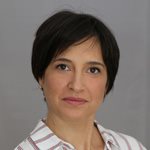ניופוגן
דיון מתוך פורום המטולוגיה
שלום. אני מבריא מהוצ'קינס IA מקבל ABVD (שלושה מחזורים) שלשום התחלתי את הטיפול השלישי. הרופא שלי רוצה שאני אקבל זריקות ניפוגן עקב ספירות ניוטרופילים נמוכות. הוא המליץ שאני אקבל 5 זריקות, בחמישה ימים לפני הטיפול הבא. ממה שקראתי ושמעתי, ממולץ לקבל את התרופה יום לאחר סיום הטיפול ולא קרוב לטיפול הבא. שאלתי את הרופא והוא טען שאלה הבדלי גישה בין רופאים. האם תוכל להביע את דעתך בנושא? תודה עופר.
שיא ההשפעה של הכימותרפיה מבחינת הלויקוציטים הוא כ- 10-14 יום לאחר מתן הטיפול. תקופה זו נקראת תקופת "הנאדיר". במקרה של ABVD הניתן כל שבועיים יוצא שתקופת המינימום היא בערך גם תקופת תחילת הטיפול הבא. ה- G-CSF ניתן כדי לאפשר מתן הטיפול בלי דחיה ובלי הורדה במינון התרופות ולכן הגיוני לתיתו בתקופה זו של הנאדיר שבמקרה של ABVD הוא גם תחילת המנה השניה של הקורס. מצרף 2 תקצירים בנושא מתן G-CSF ב- ABVD Leuk Lymphoma 2001 Apr;41(3-4):353-8 Secondary prophylactic G-CSF (filgrastim) administration in chemotherapy of stage I and II Hodgkin's lymphoma with ABVD. Rueda A, Sevilla I, Guma J, Ribelles N, Miramon J, De Las Nieves MA, Marquez A, Alba E Service of Oncology, Hospital Clinico Universitario, Malaga, Spain. [email protected] The purpose of this study was to determine the effect of granulocyte colony-stimulating factor (filgrastim, G-CSF) for maintenance of chemotherapy dose-intensity in patients with stage I or II Hodgkin's lymphoma treated with six cycles of doxorubicin, bleomycin, vinblastine, and dacarbazine (ABVD). Fifty-six patients with stage I or II Hodgkin's lymphoma treated with ABVD were eligible for secondary prophylactic G-CSF administration because of neutropenia (absolute neutrophil count < 1 x 10(9) /L) causing treatment delay or febrile neutropenia. Patients received 300 microg (total dose) of G-CSF (filgrastim) subcutaneously on days 3 to 7 and 17 to 21 of each cycle in order to prevent dose reduction or delay in subsequent cycles of treatment continuing the G-CSF until completion of chemotherapy. Results showed that 30 (54%) of the patients required the use of G-CSF, 26 (47%) during the first or second cycle. After G-CSF administration delay in chemotherapy did not occur in 25 patients, whereas delays in the fifth or sixth cycle occurred in four patients. Despite treatment with G-CSF, one patient had febrile neutropenia. Dose intensity greater than 90% of that planned was delivered to more the 85% of patients. IN CONCLUSION: Secondary prophylactic G-CSF administration was necessary in more than half of patients with stage I or II Hodgkin's lymphoma during chemotherapy with ABVD. The use of G-CSF allowed maintenance of chemotherapy schedule and dose intensity in the majority of patients. Tumori 1994 Dec 31;80(6):453-8 The role of granulocyte colony-stimulating factor (filgrastim) in maintaining dose intensity during conventional-dose chemotherapy with ABVD in Hodgkin's disease. Silvestri F, Fanin R, Velisig M, Barillari G, Virgolini L, Zaja F, Russo D, Baccarani M Division of Hematology, University Hospital, Udine, Italy. BACKGROUND: The aim of the study was to evaluate the role and potential benefit of granulocyte colony-stimulating factor (G-CSF, Filgrastim), administered following cytotoxic chemotherapy with the ABVD regimen in Hodgkin's disease, in maintaining cycle schedule and dose intensity and in decreasing neutropenia and number of infections. PATIENTS AND METHODS: Twenty-two patients affected by high-risk Hodgkin's disease (14 localized and 8 diffuse), aged 15 to 69 years (median, 34), were given ABVD chemotherapy for a total of 6 courses (for the purpose of this study, each single course of chemotherapy was considered as two 15-day periods). No patient was given G-CSF after the first cycle. After each cycle, G-CSF was administered only for: 1)absolute neutrophil count < 1 x 10(9)/L between cycles; 2) delay in cycle schedule due to an absolute neutrophil count < 1 x 10(9)/L on the planned day of treatment; or 3) fever or a documented infection, regardless the absolute neutrophil count. Once administered, G-CSF was maintained in the subsequent cycles. RESULTS: Seventeen of 22 patients (77%) required the administration of G-CSF (5 micrograms/kg b.w.; a median of 5 doses/cycle); most of them (13/17) before the 5th dose of chemotherapy. The main reason for introducing G-CSF into therapy was neutropenia during the interval between courses (n = 4) or on the planned day of treatment (n = 11). Comparing 112 courses where G-CSF was not administered with 124 where it was, in the latter group we observed: 1) a significantly lower (P = 0.0002) incidence of cycle delays (0 vs 13), with a median delay of 7 days (5 to 11). The main reason for cycle delay was neutropenia (n = 13); 2) a greater dose intensity delivered to the patients while on G-CSF (100% vs 95.2 +/- 8.8%; P = 0.0001); 3) an absolute neutrophil count significantly higher at day 8 (P < 0.0001) and day 15 (P < 0.0001); 4) a significantly lower (P = 0.0003) incidence of neutropenia (2 vs. 17). No difference in the incidence of infections was observed between the two groups of cycles (P = 0.5889), but the duration and severity of the same were greater during chemotherapy without G-CSF, requiring antibiotic therapy and causing cycle delay. CONCLUSIONS: In conclusion, our data suggest the use of Filgrastim in Hodgkin's disease also during conventional-dose chemotherapy with ABVD. It is not required from the first dose of therapy, but as soon as neutropenia appears between cycles or on the planned day of treatment. Then, its use allows maintenance of the chemotherapy schedule and dose intensity. It also decreases frequency, duration and severity of neutropenia and its sequelae.

